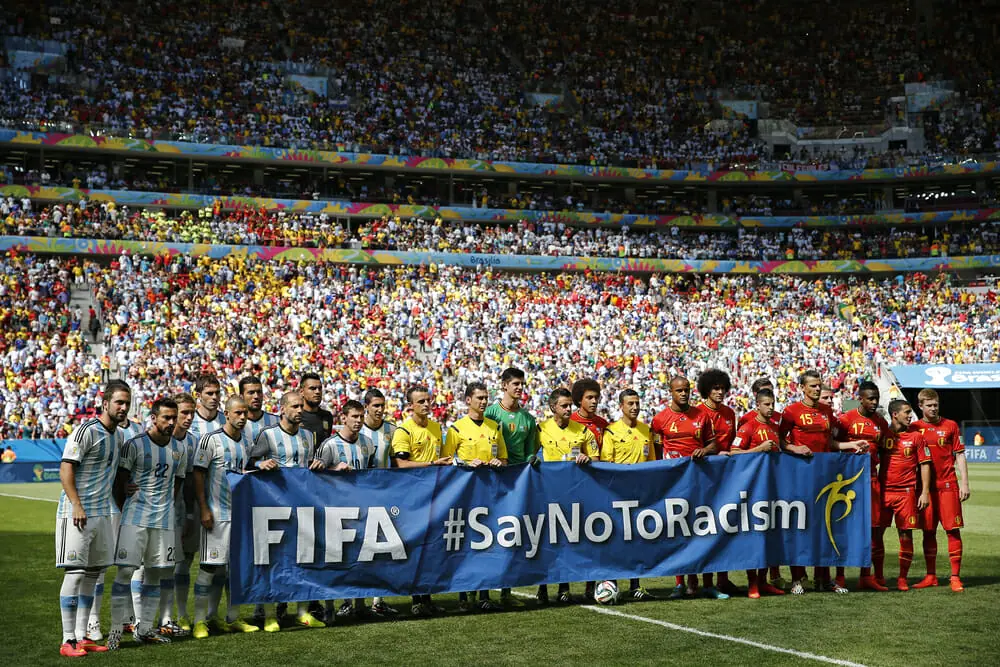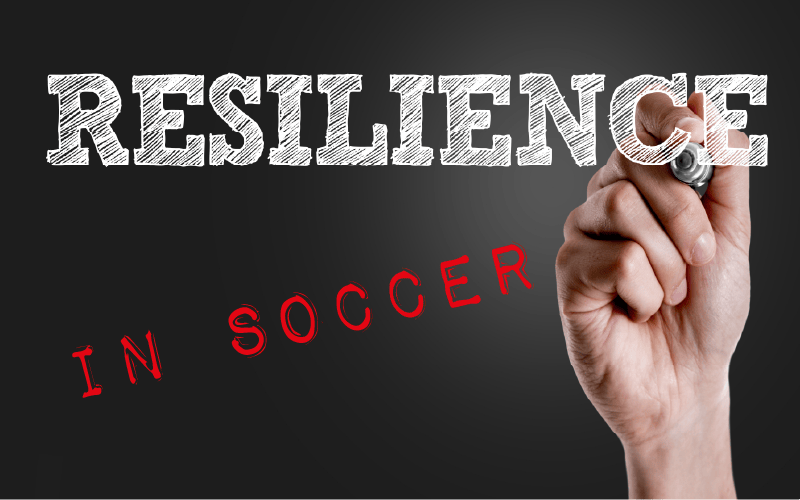Financial crises, pandemic, warfare circumstances, global power games, immense competition.
In the midst of all the aforementioned issues, it is evident nowadays that soccer clubs function in this extraordinarily high-pressure environment, where management is striving for success on and off the pitch.
Soccer produces about $33 billion every year – more than any other sport, and about 40% of the global sports revenue. Most of this is raised in Europe, with soccer remaining much smaller elsewhere, at least financially (see Figure 1).
FIFA, UEFA, and national associations contribute about $3 billion in additional revenue each year.
Soccer is constantly evolving both as a sport and lucrative industry, resulting in the need for professionals with a holistic approach that may effectively organize and manage soccer clubs and soccer-related entities.

Economics Controls the Club
Soccer plays a key role in conveying fundamental values such as solidarity, fair play, inclusion, and equality. Economic success of soccer clubs is important; nonetheless, business must not take precedence over values. Interestingly, the soccer industry is characterized by its unorthodox business practices, with questionable ownership investing in teams and leagues excessive amount of money unevenly and disproportionately, thus creating an increasing imbalance in competition. Understanding revenue and expenses are key, as soccer clubs constantly work to balance their revenue and expenses to keep operating. If revenues decline, the club will have to either find new revenue sources or reduce expenditures. For most soccer clubs around the world, there is a fine line between profitability and losses. Almost every soccer club in the world, and especially the big and popular clubs, see their revenues generated mainly in three ways; commercial, broadcasting, and matchday sales (see Figure 2).
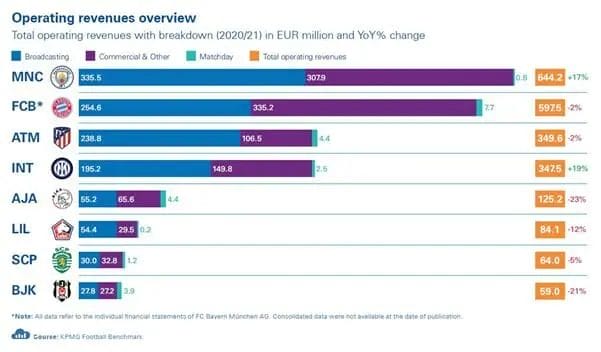
Salary is the Biggest Expense
On the other hand, clubs’ expenses are commonly divided into three groups: salaries, amortization, and operating costs.
With increasing broadcasting and commercial revenues, it would be expected that soccer clubs increase their profits, accordingly.
The harsh reality is that the majority of the clubs barely make a profit despite growing revenues.
The biggest cost for a club is the players’ salaries. The accepted range is between 50-65%, with 50% being the norm for financially sound clubs.
However, for some clubs in the English Premier League (e.g., Everton, Leicester City), the wages-to-revenue ratio has risen up to 80% in 2020, a percentage that is challenging to sustain (Yilancioglu, 2021).
Apparently, there seems to be a financial integrity problem within the wider soccer industry, which poses a challenge for soccer clubs to apply sound financial and management and sustainable practices, as well as for respective governing bodies to reinforce financial regulations (Andrews & Harrington, 2016).
It is pivotal that a soccer club balances its sporting (e.g., clear playing philosophy) and business (e.g., coordination of functional areas such as finance, marketing, technology, operations) strategy.
The club’s overall strategic objectives need to be also evaluated through specific performance measures. It has been clearly demonstrated by many studies that where clubs have good governance, they perform more effectively.
The Power & Growth of Sponsorship
The long-standing dominance of sport in sponsoring continues.
The global sports sponsorship market was worth an estimated $57 billion in 2020, and is expected to grow to 90 billion by 2027 (Gough, 2021). The growth of sport in many countries has outpaced domestic product growth.
Notably, about 70% of North American sponsorship goes to sport, and this is similar across regions (Cornwell, 2020). Soccer sponsorship is a rapidly growing sector of commercial activity both for properties and sponsors.
The distinctive nature of “marketing properties” which exist in soccer make it appealing, and the passion of soccer fans enhances its value for brand awareness, image transfer and hence brand equity and loyalty to brands.
Globalization, digitalization, and a developing media landscape have changed the face of top-tier soccer sponsorship, creating untapped commercial opportunities (Bridgewater, 2014).
However, growing sponsorship values has increasingly limited the types of sectors and companies that can now afford this type of investment (see Figure 3; “The changing face,” 2020).
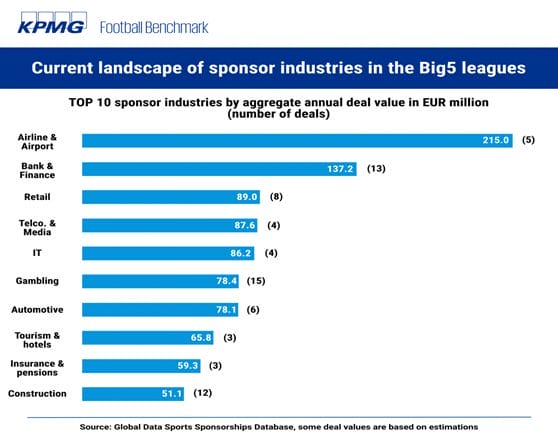
The top five global soccer leagues (i.e., English, Spanish, German, Italian, and French) are dominant, attracting sponsorship value far in excess to other leagues internationally due to their superior global appeal.
The English Premier League generates annually 832 million euros in front-of-shirt and kit sponsorship income, almost double its nearest rival Spanish La Liga at 436 million euros (see Figure 4; “The changing face,” 2020).

World Cup Years increase Soccer Marketing
In the lead up to the 2022 FIFA World Cup in Qatar, we have observed an increase in cause-related or higher purpose marketing.
The widespread and global reach creates a need for soccer properties to be also brand activists and practice with caution marketing and sponsorship especially in terms of questionable athlete behavior and its effect on endorsements, as well as potentially inappropriate sponsors such as commercial gambling providers, alcohol manufacturers, and junk food manufacturers (Cornwell, 2020).
The increasing popularity of women’s soccer is another potential growth area for sponsoring partnerships.
A newer member to the sports sponsorship realm is eSports. This is certainly a growing market for advertisers and sponsors within soccer to tap into, as eSports market revenue is forecast to exceed $1.62 billion by 2024.
Moreover, revenue from eSports sponsorship and media rights reached $822 million in 2020 and is forecast to grow another 50% by 2023 (Gough, 2021).
Soccer is more than just a sport. It is “the beautiful game” that inspires billions of people around the world.
Modern soccer is tied to a plethora of issues such as racism, migration, social inclusion, and gender equality. Soccer has the responsibility to serve as a global ambassador for solidarity, unity, and collectiveness.
Soccer clubs may incorporate sport-for-development (SFD) components to their strategic planning and various programming initiatives. SFD broadly refers to the utilization of sport to positively influence public health, social inclusion, and/or economic development, while fostering intercultural exchange and conflict resolution (Lyras & Welty Peachey, 2011).
Soccer clubs may function as change agents (see Figure 5; Schulenkorf, 2012) and leave a lasting legacy to their local communities through event leverage (Chalip, 2006) and meaningful social impacts/experiences.
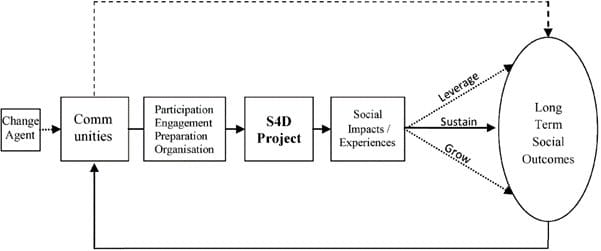
What Good Football Marketing Looks Like
Overall, the complexity of modern soccer presents a number of managerial challenges and opportunities for stakeholders. For instance, soccer coaches are not just team managers that handle sporting decisions; they are becoming an integral component of the club’s strategic and business management processes.
There is a growing necessity for those involved in soccer business to have a deeper understanding of fundamental concepts such as governance, strategic management, finance, and marketing.
Importantly, soccer stakeholders have the responsibility to serve as;
A) Enablers of sustainable development
B) Promoters of tolerance, respect, reconciliation, and peacebuilding
C) Empowerment of women, youth, and underprivileged groups;
D) Implementers of health, education, integrity, and fair play objectives.
More than ever, it is essential to soccer organizations are well organized in all areas of club management.
They must aspire to the highest standards of governance, planning, financial and strategic management while also maintaining their core philosophy and values intact. Management and leadership are crucial to the success of soccer clubs.
Given the voluntary and sometimes amateur nature of soccer clubs, clubs have to earn support and involvement, which all starts from effective leadership and management (Coskun et al., 2021).
What also characterizes those working in the soccer industry is obsessive passion and enthusiasm, it is part of their identity (Anagnostopoulos et al., 2016).
Professionals in a soccer club need to distant themselves from the fan mentality in order to make sound decisions and not be carried away by excessive emotion and passion displayed through the game itself.
Join Our Soccer Business Course
The Certificate in Soccer Business & Management delivers six specialized and succinct lectures that incorporate theoretical and practical knowledge necessary to comprehend and apply critical managerial, business, and ethical concepts within soccer entities.
Lectures are delivered by our ISSPF faculty member, Dr. Chrysostomos Giannoulakis, thus providing consistency, homogeneity, and alignment of subject matters presented. Dr. Giannoulakis is a sport management academic and professional with 20 years of experience in the wider sport industry.
He has submitted a number of external funding proposals, including a sport for social change project that focused on utilizing soccer as a means of coaching education and cultural exchange in Israel, Palestine, and Morocco.
Certificate in Soccer Business & Management
How This Course Will Improve You
The Soccer Business & Management course is designed for those who wish to be exposed to managerial components and the business side of the soccer industry, so that they can:
- Comprehend the fundamentals of sport management as they apply to effective organization and management of a soccer club or soccer-related entity.
- Understand how key financial and administrative areas lead to effective management processes, ethical choices, and sustainable development.
- Acquire a critical, holistic, and ethical approach to the soccer business, as well as recognize current and future trends within the greater soccer industry.
What Does This Course Cover?
Outline of the Certificate in Soccer Business & Management Course:
Module 1: Historical and political aspects of soccer
Module 2: Governance and regulation of soccer
Module 3: Strategic management of soccer clubs
Module 4: Finance and revenue generation in soccer
Module 5: Marketing and sponsorship of soccer clubs
Module 6: Sport-for-development in soccer
Certificate in Soccer Business & Management
Article References
- Anagnostopoulos, C., Winand, M., & Papadimitriou, D. (2016). Passion in the workplace: Empirical insights from team sport organizations. European Sport Management Quarterly, 16(4), 385-412. doi:10.1080/16184742.2016.1178794.
- Andrews, M., & Harrington, P. (2016). Off pitch: Football’s financial integrity weaknesses and how to strengthen them. CID Working Paper Series. Cambridge: Center for International Development at Harvard University.
- Bridgewater, S. (2014). Sponsorship and football. In J. Goddard & P. Sloane (Eds.), Handbook on the Economics of Professional Football (p. 117-129). Edward Elgar Publishing.
- Chalip, L. (2006). Towards social leverage of sport events. Journal of Sport and Tourism, 11, 109–127.
- Coskun, A., Dinc, M.S., & Tetik, S. (2021). Strategic performance management for soccer clubs: A quantitative model proposal. Journal of Human Sport and Exercise, 16(4), 836-852.
- Cornwell, B. T. (2020). Sponsorship in Marketing: Effective Partnerships in Sports, Arts and Events (2nd ed.). Oxon, UK: Routledge.
- Gough, C. (2021, August 6). Revenue of the global eSports market 2018-2025. Statista. https://www.statista.com/statistics/490522/global-esports-market-revenue/.
- Lyras, A., & Welty Peachey, J. (2011). Integrating sport-for-development theory and praxis. Sport Management Review, 14, 311–326.
- Schulenkorf, N. (2012). Sustainable community development through sport and events: A conceptual framework for sport-for-development projects. Sport Management Review, 15, 1–12.
- The changing face of football sponsorship-key players. (2020, August 4). Football Benchmark. https://www.footballbenchmark.com/library/the_changing_face_of_football_sponsorship_key_players.
- Yilancioglu, Y. (2021, April 12). The business of football-breaking down the finances of a football club. Medium. https://medium.datadriveninvestor.com/the-business-of-football-breaking-down-the-finances-of-a-football-club-8263614059d8.
Share this article:


